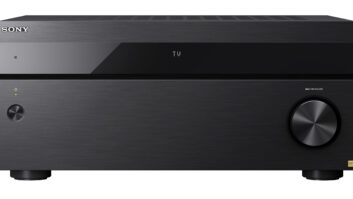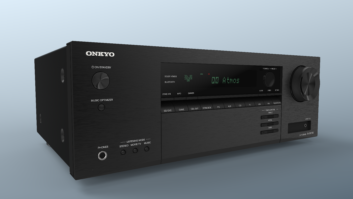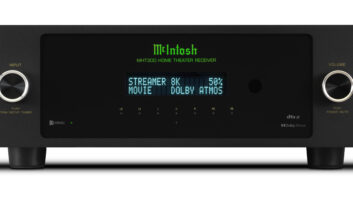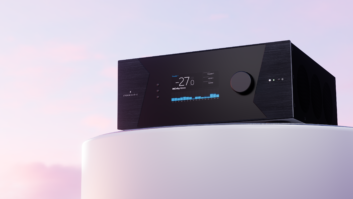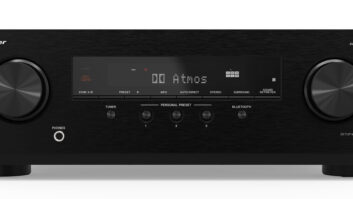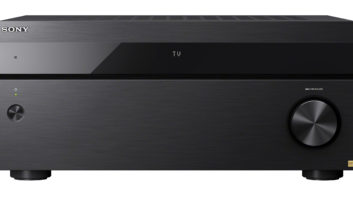One of my favorite philosophers, the neuroscientist Sam Harris, frequently makes an intriguing point about the future of artificial intelligence. As AI develops, he points out, human-level intelligence is not a meaningful milestone. Given that machines are already equipped with mathematical prowess and memory recall that puts the human brain to shame, he argues, once machines reach a level of general intelligence comparable to our own–that is to say, the ability to understand new concepts and apply learning in unfamiliar situations as well as we do, and recognize Bugs Bunny as a rabbit, and understand why Eddie Izzard is the funniest man in the world–then they will be superhuman. At no point will we be meaningful peers with our creations.
That thought was right at the forefront of my mind the entire time I spent reviewing Arcam’s AVR850 AV receiver, but to understand why, we need to back up and discuss its predecessor, the AV750. To say that the AVR750 had its share of connectivity limitations would be putting it kindly. It was released with HDMI 1.4a just as HDMI 2.0 was becoming a thing, and suffered from its fair share of handshaking issues, not to mention the fact that tuning between HD and SD channels on satellite caused the receiver to go dark for an excruciating amount of time. And its room correction, while not ineffective, was rudimentary at best. But, my goodness, its pure audio performance was unparalleled, thanks in part to Arcam’s Class G amplifier topology. Class G amps, if you’re not hip, use two rails per channel, one low voltage and dedicated to Class A operation, and the other high voltage and dedicated to class A/B operation.

Arcam’s new AVR850 relies on the same Class G topology as its forebear, but brings the rest of its chassis screaming into the present with HDMI2.0a and HDCP2.2 compliance, Dolby Atmos and DTS:X support, and seven channels of built-in amplification.
Fast forward a few years, and Arcam’s new AVR850 relies on the same Class G topology as its forebear, but brings the rest of its chassis screaming into the present with HDMI2.0a and HDCP2.2 compliance, Dolby Atmos and DTS:X support, and seven channels of built-in amplification (which can be configured as 5.1 with powered zone 2, 7.1, or 5.1.2), and 11.2 channels of processing (which, with the addition of Arcam’s P429 Class G Power Amplifier, brings the AVR850’s object-based surround sound capabilities up to 7.1.4). But perhaps most significantly of all, the AVR850 features Dirac room correction.
Around back, the most obvious change from AVR750 to AVR850 is the loss of legacy video inputs, both component and composite. One weird artifact left in the design is that the only input labeled specifically for use with VCRs (as if!) is an HDMI in. But back around front, the AVR850 does regain one feature missing from its predecessor: a big, beautiful, silky-smooth volume knob.
Setup, for the most part, was straightforward in my case. Arcam provides a Control4 driver on its website, which is labeled as a serial driver but which works great for IP control. As for physical setup, it’s hard not to appreciate just how well built the AVR850 is. Everything, from the gorgeous five-way binding posts to the chassis itself feels rock-solid and bulletproof.
As for the Dirac setup? Well, if you’ve never run Dirac room correction before, you might not be prepared for just how meticulous (and time consuming!) a process it can be. The AVR850 ships with its own mic, which connects to a USB soundcard that is plugged into your PC or Mac (separate downloads for each are provided on Arcam’s website). The setup process includes adjusting the gain and sensitivity of the mic before you can begin your measurements, and if you have multiple subwoofers, tweaking them to achieve optimal output without clipping can be tricky.
Running Dirac also requires that your microphone be placed in a series of nine very specific positions, which vary not only in the X and Y axes, but also the Z axis, and interpreting the exact position from the diagrams in the Dirac software requires a bit of three-dimensional thinking. And if you want to tinker with results at all (which you can, in spades), you need a pretty thorough understanding of target curves. You don’t need to, though. Aside from adjusting channel levels a little, you can accept the results of Dirac’s magic and upload them to the AV850 and be done with it.
Either way, the results of Dirac have to be heard to be believed. In terms of correcting for bass problems in the room, I’d put it on par with Anthem Room Correction. But Dirac also goes a step further by not only correcting frequency response, but also impulse response. Unlike so many other room correction systems that work in the time domain, though, it doesn’t deaden the sound or radically alter the timbre of voices or instruments. Normally, I would never apply any room correction above, say, 500Hz. With Dirac, though, I’m more than happy to let it do its thing across the entire audible frequency range.
But Dirac only tells part of the story when it comes to the wonderful sound delivered by the Arcam AVR850. Because, as I said, its immediate predecessor didn’t benefit from such advanced room correction, and it was already the best-sounding AV receiver I’d ever heard. Rather than dig into so many specific examples of individual demo clips, allow me instead to give you a general overview of the AVR850’s performance: imagine the purity of tone and transparency delivered by gigantic, horribly inefficient, appliance-sized Class A amps, combined with the dynamic punch and impact of the best Class D amps. The benefits are clearly heard even with movies (I’m thinking in particular of the scene in The Force Awakens in which Kylo Ren meets Poe Dameron for the first time, freezing his blaster bolt in the air–the ebb and flow of it, the tiny crackles, the wallop when it’s released and finally explodes, all of it is just tingle-inducing), but music is where the AVR850 really shines. Even in stereo mode (hell, especially in stereo mode!) with tracks like “Question” from the Moody Blues, the receiver delivers the perfect mix of deliciously lifelike timbres and nuance, backed by stupendous, explosive punctuation. Put simply, finding amps that rock this hard and sing this sweetly–at the same time–is a rare treat.
Combine that with the beautifully controlled bass and flawless imaging provided by Dirac room correction, and the sound produced by this receiver is almost too good to be true (as it should be for $6,000). Of course, if you’re familiar with Arcam already, that’s not great surprise. What really elevates the AVR850 above the pack is that it also does a great job with all of the basic features you expect from a rock-solid and reliable AV receiver: the latest in connectivity, excellent video switching, support for the newest audio and video formats, and full-featured support for advanced control systems.
soundorg.com (U.S.)
arcam.com.uk (UK)
Kudos
Unparalleled audio performance and world-class Dirac room correction elevate this amazing receiver above the pack.
Concerns
The remote can be fussy to use, and weird design artifacts abound: like the HDMI input dedicated to VCRs.
Product Specs
Continuous power output, per channel, 8Ω/4Ω:
► 2 channels driven, 20Hz – 20kHz, <0.02% THD – 120W/200W
► 2 channels driven, 1kHz, 0.2% THD – 130W/210W
► 7 channels driven, 1kHz, 0.2% THD – 100W/180W
Video Inputs
► HDMI – x7 (6 x HDMI2.0a, HDCP2.2, 1 x MHL compatible)
Video Outputs
► HDMI – Z1 x2 (out1 ARC, HDMI2.0a, HDCP2.2, out2 HDMI2.0a, HDCP2.2), Z2 x1 (HDMI2.0a, HDCP2.2)
Audio Inputs
► HDMI – x7, Coax SPDIF – x4, Toslink – x2, RCA Phono – x6, 3.5mm aux, USB input, Ethernet Client, Internet Radio, ARC (from display)
Audio Outputs
► 7.1.4 Pre-amp output – 12x RCA Phono
► Zone 2 output – RCA Phono
Supported Surround Modes Include
► Dolby Atmos, Dolby Surround, DTS:X, DTS-HD Master Audio, DTS-ES 6.1 Discrete, DTS-ES 6.1 Matrix, DTS 5.1
General
► 12V Trigger x2
► IR in x2
► 6V rSeries PSU x1
